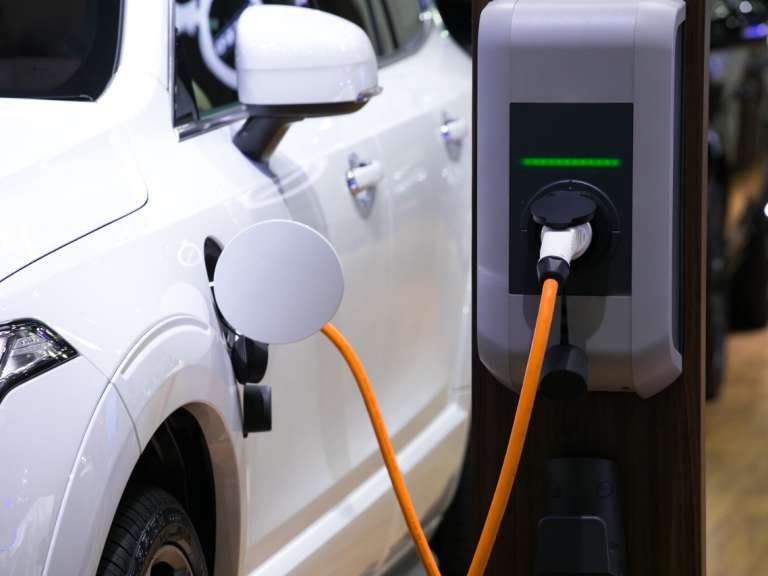How Energy Storage Can Transform Transmission
Robert RapierAs intermittent power production continues to be added to the grid, the role of storage will become increasingly important to the transmission of energy.

This following is the second part of a two-part series that began with Generation Isn't The Center of the Universe Anymore. Part one discussed how transmission must undergo a transformation to accommodate a distributed, two-way flow of electricity.
The emergence of distributed energy resources (DERs) has shifted focus away from centralized power production and distribution and toward smaller-scale, localized power production and more flexible energy transmission grids.
In order to fully realize the potential of this transformation, the electricity industry needs low-cost ways to store energy from intermittent power sources, which can then be called upon as needed to satisfy demand. Here are just a few ways that storage is set to shape the future of energy transmission as generation becomes more intermittent and decentralized.
Traditionally, the grid has had to precisely balance supply and demand at every instant in time. As the total consumption of power increased or decreased, grid operators controlled generation to move up or down accordingly. In doing so, generation precisely met the amount of power needed to serve the demand at any given moment. Energy storage frees operators from this tight constraint; demand and supply can now be mismatched, provided there's enough storage to compensate for the difference.
As described in part one, renewables complicate energy balancing because they are much less controllable; a wind farm can reduce its power production but can't increase it beyond what the wind energy provides. Similarly, a utility-scale solar farm can reduce its power production, but can't increase it beyond what's possible given the existing sunlight. And small-scale solar installations, like panels on homes, have no controls for either reducing or increasing power production. Energy storage can, therefore, partner well with these resources, compensating for their lack of controllability and helping them play responsibly in the balancing equation of the system operator.
This concept isn't exactly new, either. Storage in the form of pumped hydro energy has been available for a long time—and where it's available, it's effectively used to help balance supply and demand in energy transmission systems. However, most electrical grids don't have access to pumped hydro storage and are therefore thirsty for alternative means.
Battery technology is quickly becoming a cost-effective resource for grid-scale energy storage, with prices for battery cells falling by 70 percent between 2012 and 2017, according to PV Magazine.
However, while battery costs have come down, in most applications battery storage is still expensive. One application where storage is quickly entering grid operation is fast frequency response. This is, in essence, short-duration energy balancing; it helps balance supply and demand on a time scale of seconds, which translates into the system frequency (60 Hz or 50 Hz) staying constant. This application pairs nicely with wind and solar energy. But as time scales become longer, the economics become more difficult.
For example, it isn't cost effective to store enough excess solar energy to meet the demand for a local town at night, when the sun isn't shining. Even larger time scales—such as storing excess wind energy from a windy season to be consumed during a less windy season, for example—remain far off for batteries, and are more in the realm of pumped hydro storage. For these longer time scales, gas turbines, coal-fired power, or nuclear power backup will be more economical for the near future. As battery costs come down, however, that may change.
The rapid penetration of electric vehicles (EVs) may also provide some advantages for the grid. Typically, EVs recharge at night when demand is low. This provides a better overall use of infrastructure, as it flattens out the load profile—an attractive prospect to both grid operators and power generators.
Sending the right market signals can encourage EV owners to align their energy consumption to this model. For example, higher peak prices can ensure that people aren't charging their EVs during periods of peak demand.
But it becomes even more interesting to consider EVs as mobile battery storage for the grid. Imagine an electric vehicle that pulls power from the grid to charge at night, but then feeds some of that power back into the grid during the day as demand peaks. The EV's battery would act as temporary, short-term power storage for the grid. A fleet of EVs, all plugged into the grid, could provide a controllable injection of power or draw from the grid as needed.
EV owners who choose to participate in such a program could specify how much of their battery could be drawn down, and be compensated for providing peak-demand storage. They could then recharge their batteries during periods of lower demand.
This would be like a large mobile battery backup for the grid, and it could reduce the need for new generating plants. LichtBlick, a German energy and IT company, has already rolled out such a program. It's called SchwarmDirigent, which translates to swarm maestro, and it manages the grid integration of over a thousand DERs, including EVs and other consumer-generated energy sources.
Economic energy storage has been called the Holy Grail in the transition toward DERs. Creative energy storage options will become increasingly important as more intermittent resources are added to the grid. And as energy storage options continue to become more economical, the need for conventional backup power will diminish, paving the way for greater penetration of intermittent power sources for the grid—on both sides of the meter.
Will the responsibility of intermittent energy source balancing fall primarily on batteries and energy storage, or can digitized thermal power plants take on some of the task?
Microgrids can deliver clean, reliable electricity to remote regions of the world that don't have access to centralized generation and transmission.
The EIA estimated that coal will overtake natural gas in power production this winter. Are these simply seasonal power generation trends?